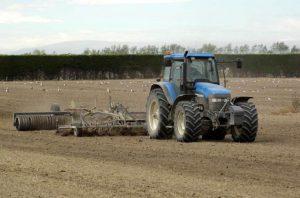Specific Tasks
Agriculture and tilling
What, and issues to look out for

Exposing and disturbing the soil on farm ahead of or during windy conditions can result in significant erosion of your most valuable resource. Keep a buffer between riparian areas and tillage to protect waterways from soil phosphorus and nitrogen.
What
Agriculture and horticulture are, in places, significant sources of sediment into waterways and potential dust nuisance. Keeping soil out of waterways and preventing wind erosion is good for water and air quality and also for protecting the productivity of farms. The top layer of soil is usually the most valuable, so it makes sense to protect it.
In many areas of Canterbury, stock must be kept away from waterways to avoid damage to the bed and banks of streams, rivers and wetlands, or to protect bathing and drinking water quality. Use this online interactive Stock Exclusion Rules map to check these locations.
In other areas, while stock exclusion may not be required by rules it is good practice and will help water quality.
Issues to look out for
Waterways
Make sure that tilled or disturbed land doesn’t damage waterways, by:
- Leaving a sufficient buffer strip between tilled areas and the waterway so that any sediment-laden runoff stays in the paddock
- Following the land contours where possible, so that downslope erosion is avoided
- Avoiding disturbing or tilling channels or low spots where water will flow while the soil is exposed.
Dust
Constructing and maintaining farm tracks generally requires earthworks. While their volume will generally be low, the potential and/or actual effects of erosion and sediment discharge still need to be minimised. The general principles of ESC apply.
In addition, tools especially appropriate for farm tracking work include non-structural approaches and principles, dust control tools, decanting earth bunds, silt fences and works in waterways.
Where possible avoid disturbing large areas of soil during or ahead of high winds – particularly nor’westers. The drying effect of the wind will blow much of your precious topsoil away.
Investigate whether soil stabilising products could help prevent wind erosion after cultivation or tilling. A range of products are becoming available to help farmers protect soil following cultivation.
